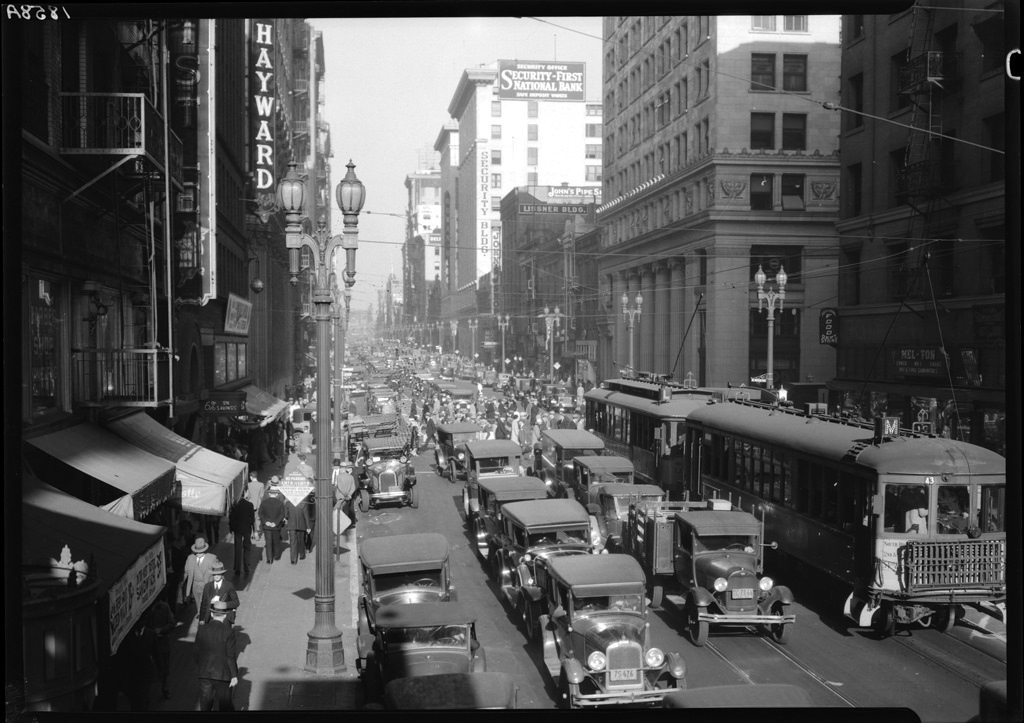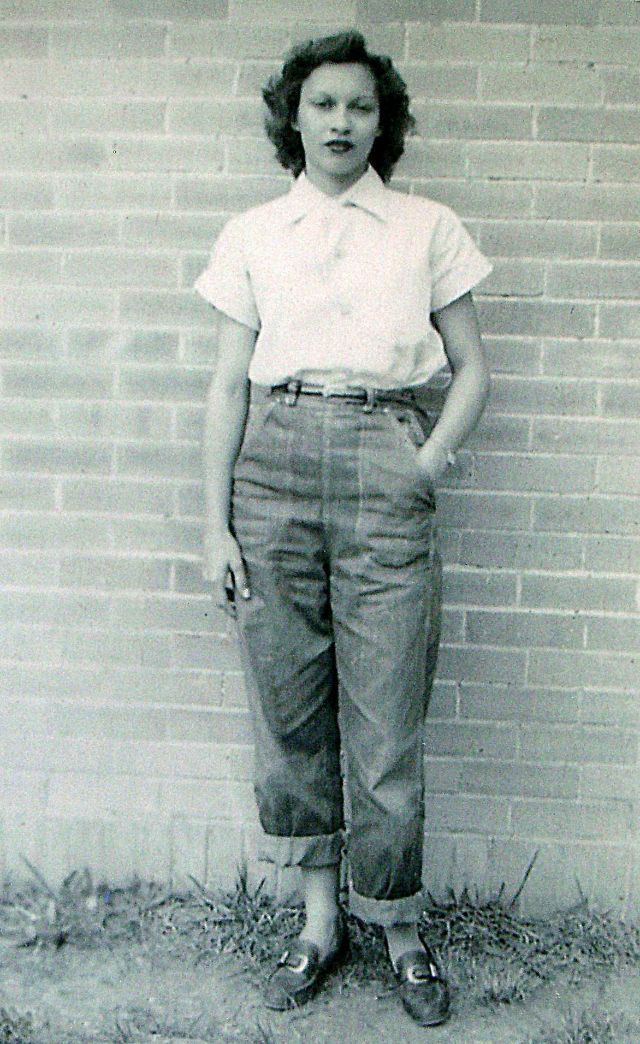The image of Las Vegas that emerged in the 1970s was one that would take decades to shed: a tacky tourist trap with aging casinos, cheap restaurants, and showrooms filled with performers whose careers were on their last legs.
With a few exceptions, investment had slowed to a crawl and Vegas didn’t seem as exciting anymore, especially when it was forced to compete with the sparkling newness of Atlantic City, where gambling was legalized in 1976.
There were some bright spots.
In 1971, the 500-room Union Plaza opened at the head of Fremont Street on the site of the old Union Pacific Station. It had, at that time, the world’s largest casino, and its showroom specialized in Broadway productions.
The year 1973 was eventful: Over at the Tropicana, illusionists extraordinaire Siegfried & Roy began turning women into tigers and themselves into legends in the Folies Bergere.
Meanwhile, just up the street, the original MGM Grand (now Bally’s) trumped the Plaza as the largest hotel and casino in the world, with Dean Martin as the opening evening’s host.
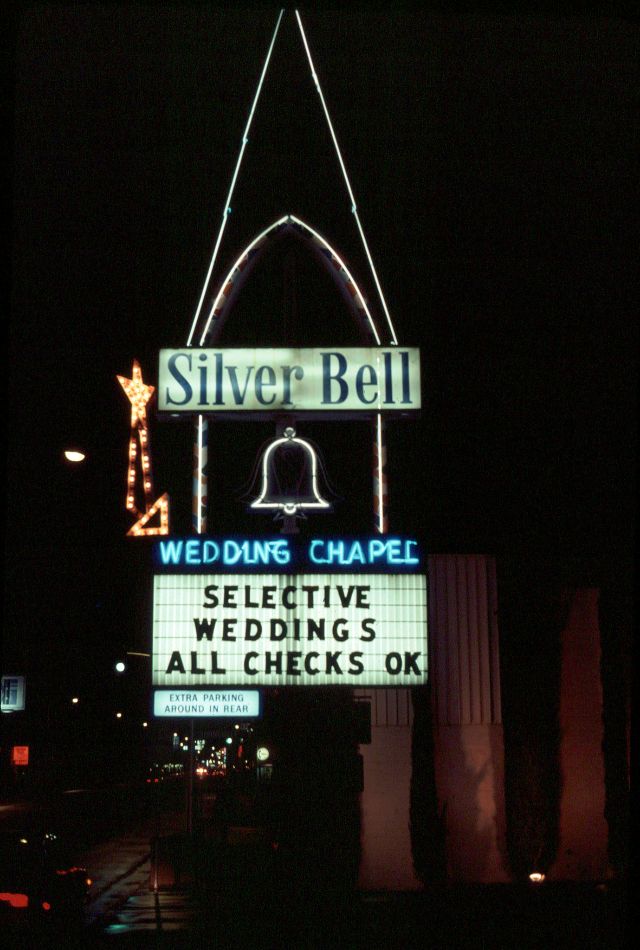
Silver Bell Wedding Chapel, Las Vegas.
Las Vegas made its way into America’s living rooms with two very different television programs. Merv Griffin began taping his daytime talkfest in 1971 at Caesars Palace, taking advantage of a ready supply of local headliner guests.
Then, in 1978, Vega$ debuted, instantly emblazoning the image of star Robert Urich cruising down the Strip in his red Thunderbird convertible on the minds of TV viewers everywhere.
As the decade drew to a close, an international arrivals building opened and turned McCarran Field into McCarran International Airport, and dollar slot machines caused a sensation in the casinos.
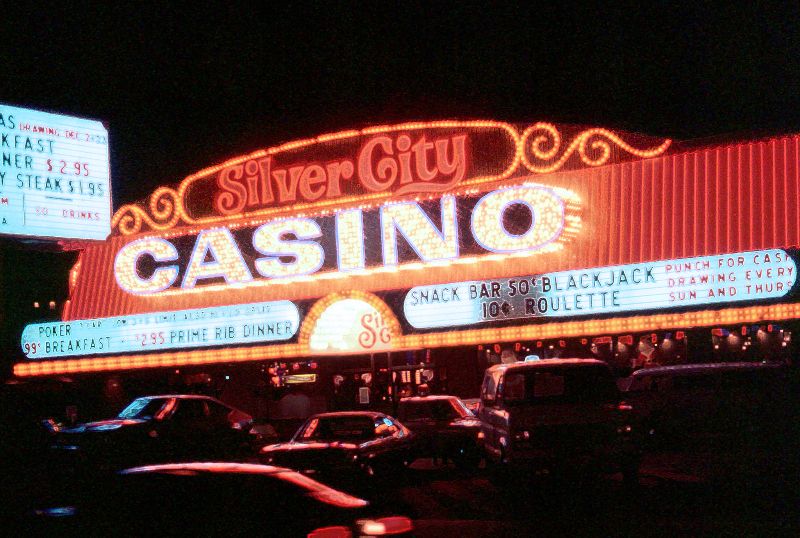
Silver City Casino on the Strip, Las Vegas.
On a percentage basis, Las Vegas and Clark County experienced incredibly high growth rates starting in the 1930s and lasting until the late 2000s recession.
During that period, the population of the city more than doubled in most decades. The rate slowed down in the 1970s with the decrease of the white birth rate, but never dropped below 60% (1980–1990), and even accelerated after 1990 due to immigration.
By 2000, Las Vegas was the largest city founded in the 20th century, and by 2006 it was the 28th largest city in the U.S., with a population of 552,000 in the city and nearly 1.8 million in Clark County.

Silver Slipper Casino, Las Vegas.
The explosive growth resulted in the rapid development of commercial and residential areas throughout the Las Vegas Valley. The strong boom in the resort business led to many new condominium developments all along the Strip and downtown area.
Also, urban sprawl development of single-family homes continued across the valley, building the areas of Henderson, North Las Vegas, Centennial Hills, and Summerlin. The rapid development and population growth both halted abruptly in the late 2000s recession.
During this period of time, American author and journalist Hunter S. Thompson wrote and published his seminal novel Fear and Loathing in Las Vegas, detailing the experience of his 1971 trip to the city.
On November 21, 1980, the MGM Grand Hotel and Casino suffered a devastating fire. A total of 85 people died and 785 were injured in what remains the worst disaster in Nevada history. The property eventually was sold and reopened as Bally’s Las Vegas, and MGM moved south to Tropicana Avenue.
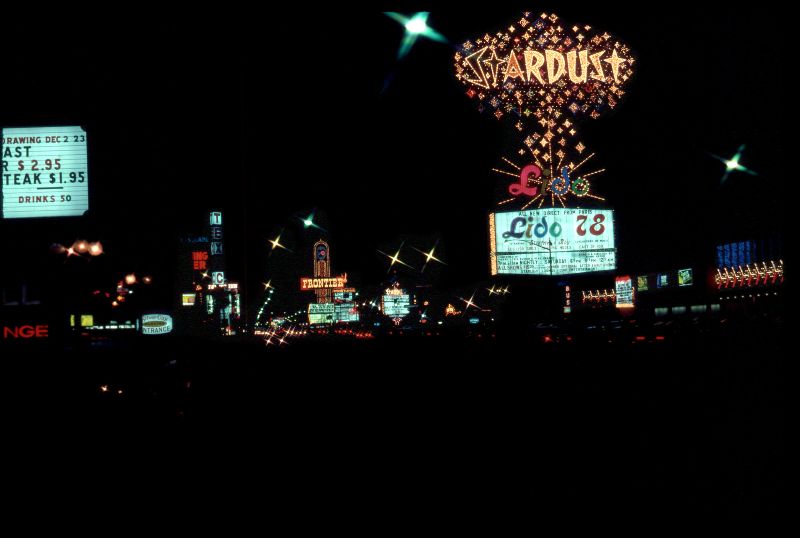
Stardust Casino, Las Vegas.
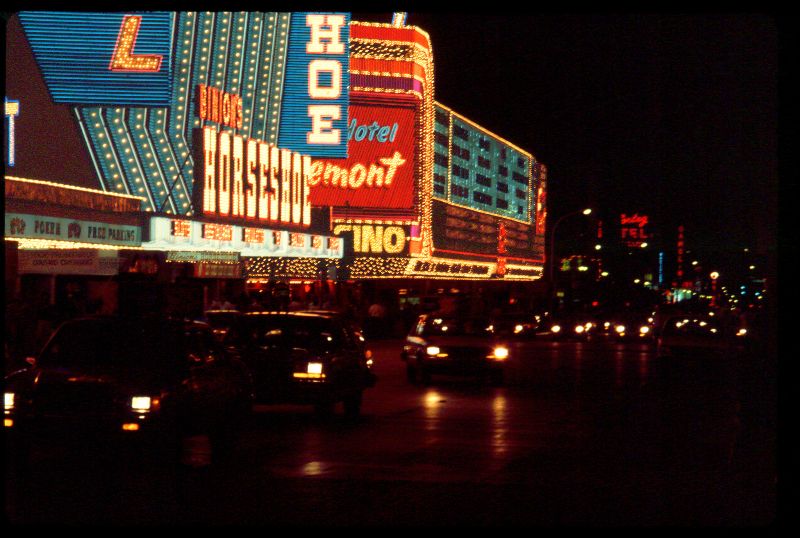
Street scenes of Downtown Las Vegas.

Street scenes of Downtown Las Vegas.

Sundance Casino, Las Vegas.
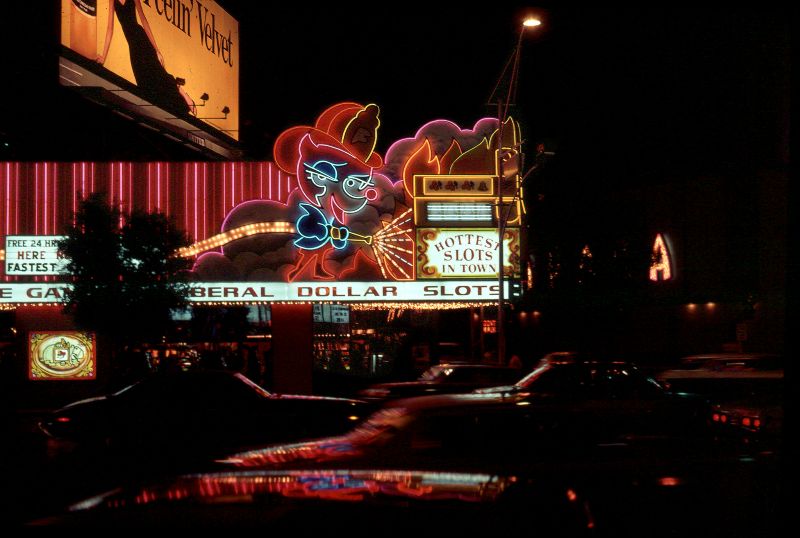
Boulevard Foxy’s Casino, Las Vegas.
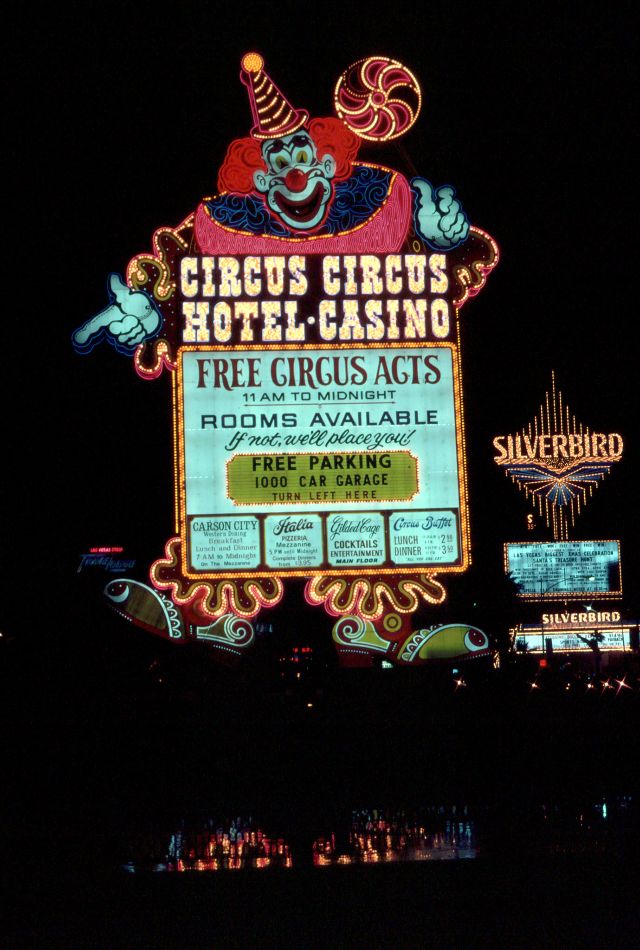
Circus Circus Casino, Las Vegas.

Coin Castle Casino, Las Vegas.
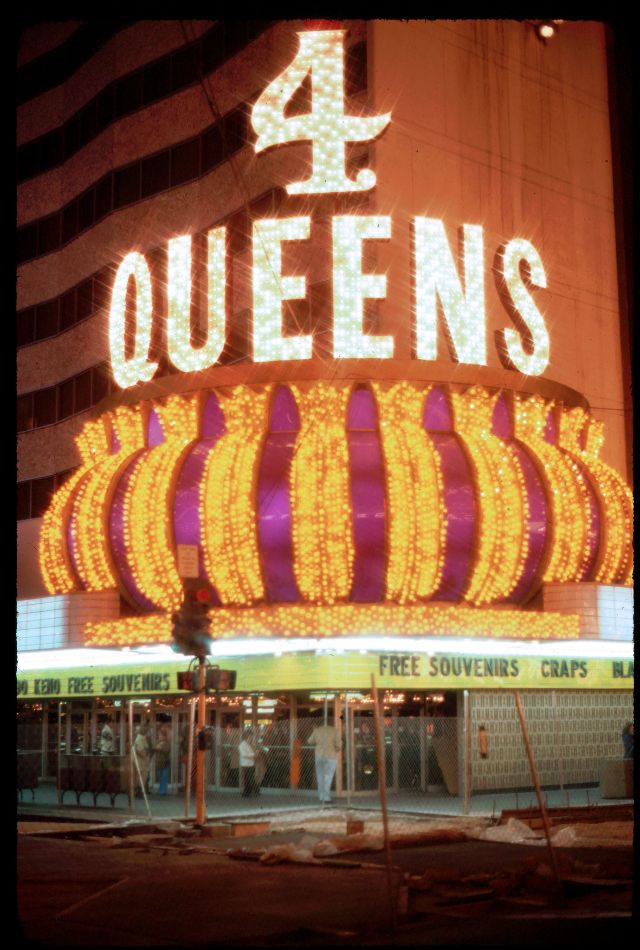
Four Queens Casino, Las Vegas.

Four Queens, Las Vegas.

Fremont Street construction, Las Vegas.
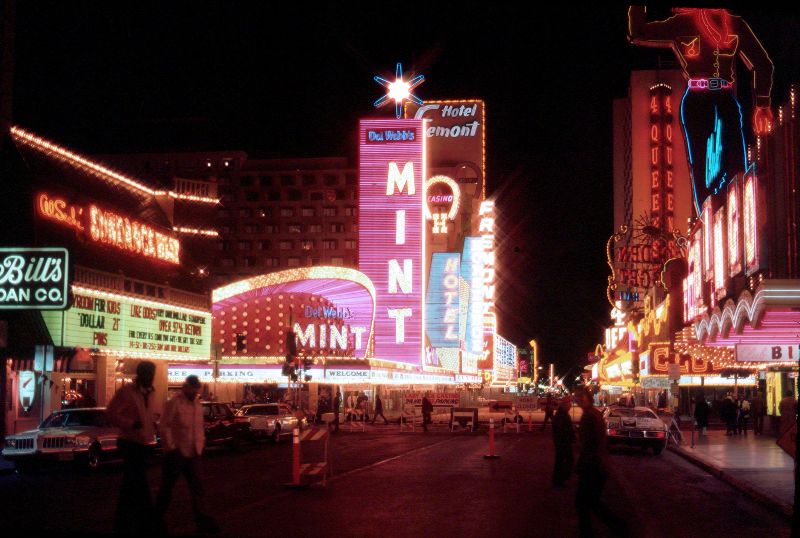
Fremont Street, Las Vegas.

Frontier Casino, Las Vegas.

Golden Gate Casino, Las Vegas.

Golden Gate Hotel, Las Vegas.
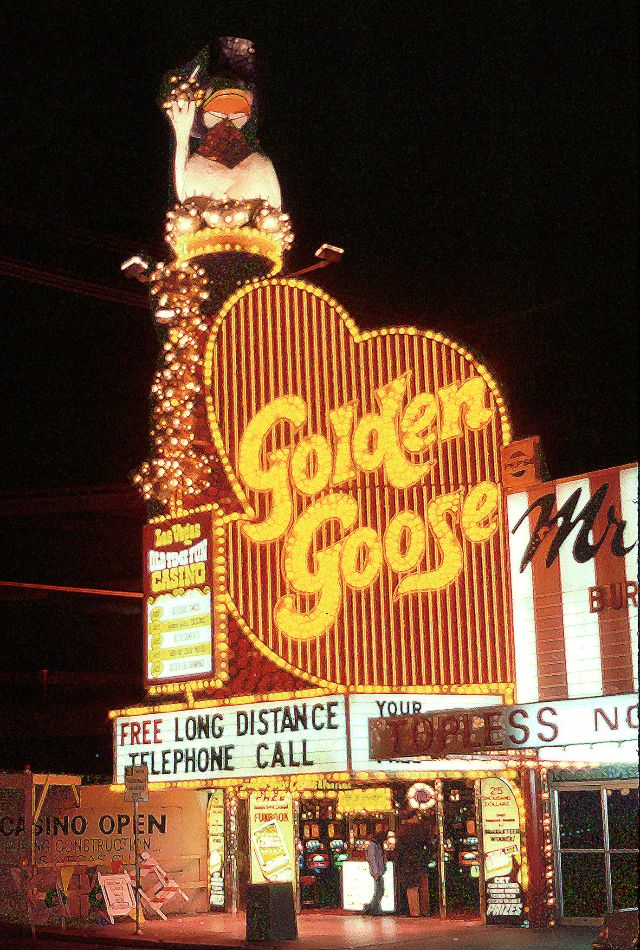
Golden Goose Casino, Las Vegas.

Holiday Motel, las Vegas.

Horseshoe Casino Entry, Las Vegas.

Horseshoe Casino, Las Vegas.

Mint and Horseshoe Casinos, Las Vegas.

Mint Casino, Las Vegas.

Mint Casino, Las Vegas.

Mint Casino, Las Vegas.

Mint Casino, Las Vegas.

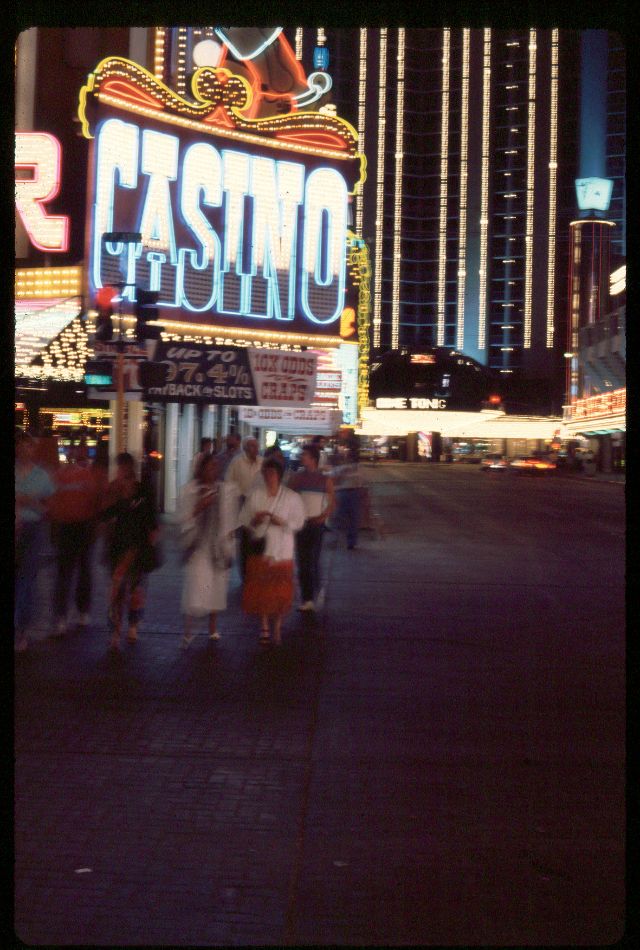
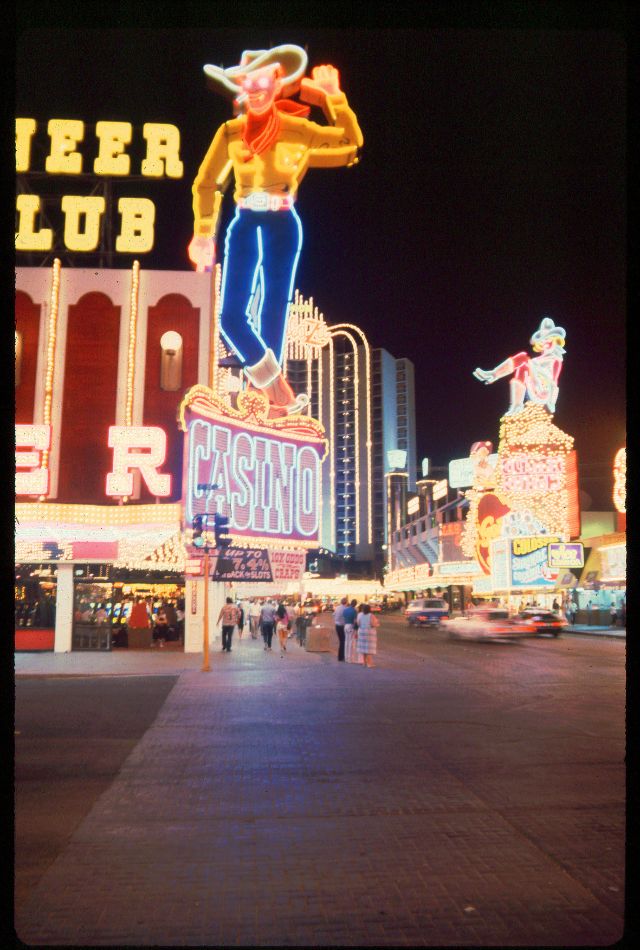
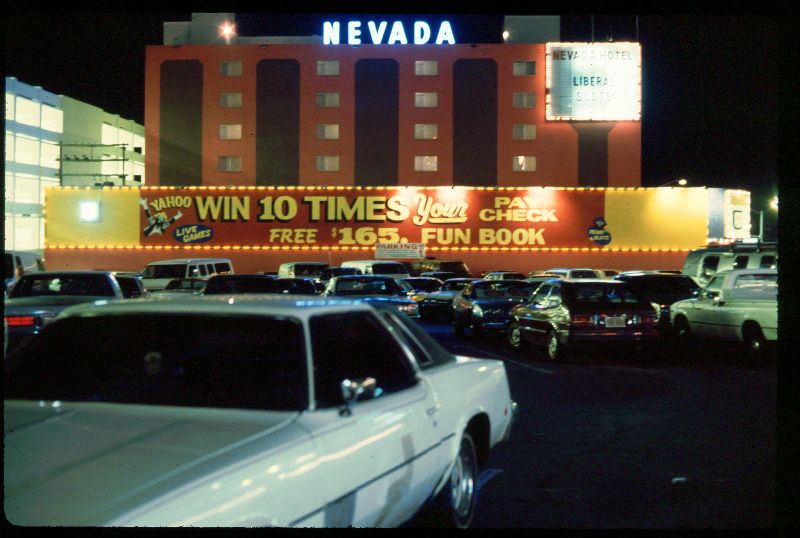





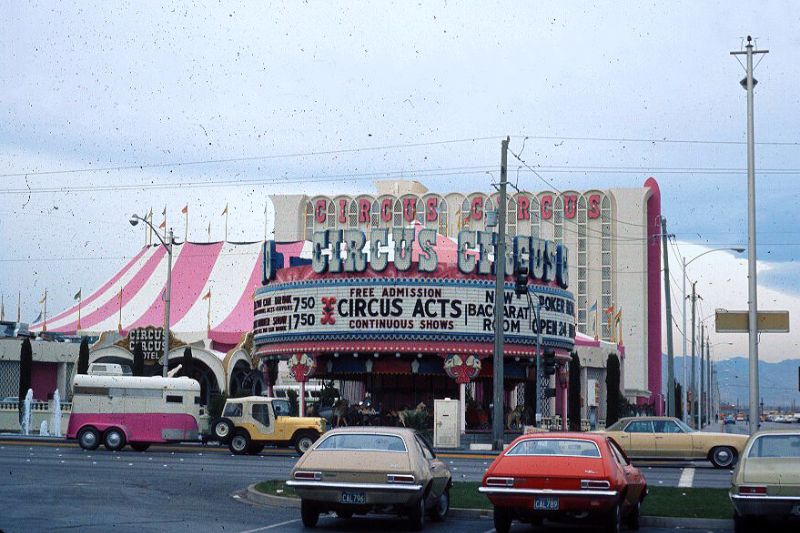
(Photo credit: Craig Gustafson / Flickr / Peter Stratmoen /Frommers: History in Las Vegas / Wikimedia Commons).

